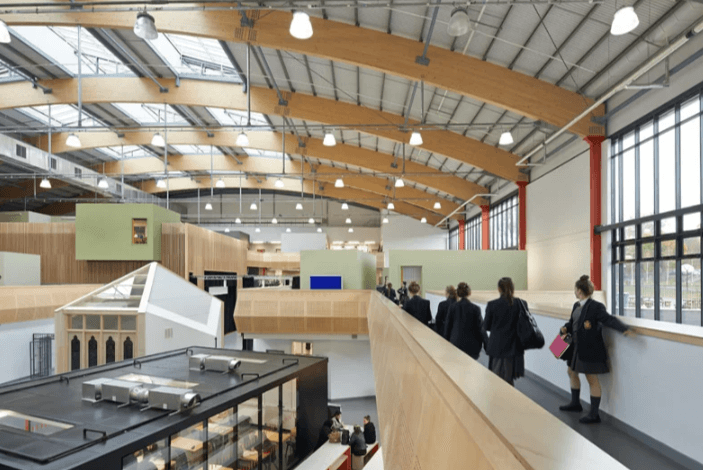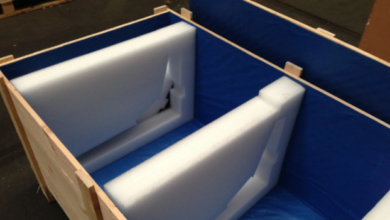Master Interior Design: From Virtual Classrooms to Industry Impact

Have you ever wondered how professionals in interior design master their craft without attending a physical classroom? Or how online courses translate into real-world success in the industry? Let’s explore the journey from virtual learning to making an impact in the field.
The Foundation of Learning: Virtual Classrooms
The journey begins with an interior design course that offers the flexibility of studying online. These programs provide comprehensive content covering essential and advanced topics, from colour theory to space planning. For many students, the convenience of accessing lessons anytime, anywhere, is crucial for balancing education with personal commitments.
In these courses, learners engage with interactive materials, participate in discussions, and collaborate on projects. Despite the virtual setting, practical applications are emphasised to prepare students for real-world challenges. A quality program builds both the technical knowledge and creative skills necessary for success in this field.
Setting Up Your Own Website
One of the first steps after completing an interior design class is creating an online presence. Setting up a professional website allows designers to showcase their work, making it accessible to potential clients and employers. A digital portfolio can display various projects, client feedback, and areas of expertise.
A well-designed website also includes a blog where designers share insights on trends, tips, and their creative processes. This enhances credibility and establishes the designer as an expert. Building a successful career in the area and reaching a wider audience requires a strong online presence.
Home Staging and Property Styling
A growing trend within interior design is home staging and property styling. This practice involves preparing homes for sale by creating visually appealing spaces that attract potential buyers. One can enhance the presentation of properties, helping them sell faster and at higher prices.
Many online design programs now include modules on home staging, teaching students how to transform spaces effectively. These skills are especially valuable for those looking to collaborate with real estate agents or expand their services. This practical application of knowledge taps into the real estate market and adds another valuable skill to a designer’s portfolio.
Branding, Business, and Social Media for Designers
A critical component of success in the design field is understanding business fundamentals. Many online courses offer modules on branding, business development, and marketing. These lessons teach students how to build a personal brand, market their services, and develop a strong professional network.
Social media plays an important role in modern marketing. Learning how to use these platforms strategically helps to grow their audience and attract clients. Branding and marketing skills are just as crucial as design proficiency for those aiming to thrive in a competitive market.
Practical Projects and Portfolio Building
Practical experience is key to mastering interior design, and online courses ensure students engage in real-world projects. Learners are tasked with assignments that simulate professional scenarios, preparing them for future opportunities.
These might include:
· Residential space layouts
· Commercial office designs
· Kitchen and bathroom styling
· Property styling for real estate
Through these assignments, students can put their talents to use and develop a portfolio of finished work, which is necessary for applying for jobs or freelancing opportunities. A strong portfolio demonstrates a designer’s ability to handle a range of projects and showcases their creativity and technical skills.
Read also How Can Retractable Shade Structures Enhance Outdoor Comfort?
From Virtual Learning to Industry Impact
The transition from virtual learning to making an impact in the industry requires creativity, dedication, and a willingness to grow continuously. Completing an online class equips students with the necessary technical skills, knowledge, and digital proficiency. The possibilities are numerous, whether aiming to work for a firm, start a business, or focus on property styling.
They are applying these skills to real-world projects—whether managing clients, leading teams, or establishing an independent practice—is the true test of success. Virtual learning provides a foundation, but it’s the passion and determination to excel that will ultimately shape a designer’s career.
Exploring Sustainable Practices
As sustainability becomes increasingly important, many online courses now incorporate eco-friendly practices. These modules teach students how to create environmentally conscious spaces by selecting sustainable materials, energy-efficient lighting, and non-toxic finishes.
Sustainable practices go beyond aesthetics—they aim to create healthier spaces while minimising environmental impact. Designers who embrace these practices contribute to a more responsible future, aligning with the growing demand for eco-friendly solutions in residential and commercial projects. Learning how to balance beauty and sustainability is a critical skill for modern designers.
An interior design course that begins in virtual classrooms can lead to a meaningful impact on the industry. From learning essential digital tools to mastering business skills, the journey is full of opportunities for growth and success. By combining creative talent with practical knowledge, students can confidently enter the field and make their mark. The right online course offers education and equips learners with the skills needed to excel beyond the classroom. Ready to elevate your career? It starts with the right course.



